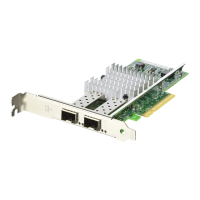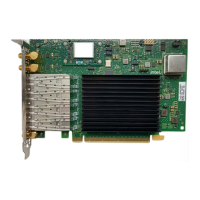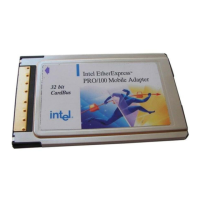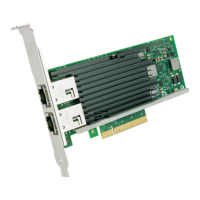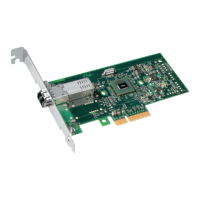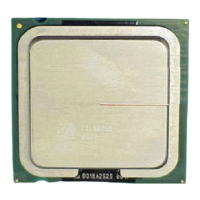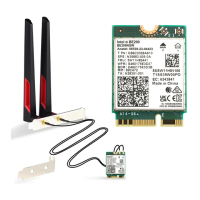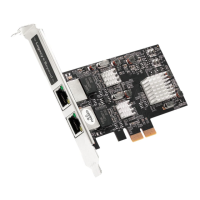Parameter Name Valid
Range/Settings
Default Description
VMDQ 0-4 for 82575-
based adapters
0-8 for 82576-
based adapters
0 This supports enabling VMDq pools, which is needed to sup-
port SR-IOV.
This parameter is forced to 1 or more if the max_vfs module
parameter is used. In addition, the number of queues available
for RSS is limited if this is set to 1 or greater.
0 = Disabled
1 = Sets the netdev as pool 0
2 or greater = Add additional queues. However, these are cur-
rently not used.
NOTE: When either SR-IOV mode or VMDq mode is
enabled, hardware VLAN filtering and VLAN tag strip-
ping/insertion will remain enabled.
max_vfs 0-7 0 This parameter adds support for SR-IOV. It causes the driver to
spawn up to max_vfs worth of virtual function.
If the value is greater than 0, it will force the VMDQ parameter to
equal 1 or more.
NOTE: When either SR-IOV mode or VMDq mode is
enabled, hardware VLAN filtering and VLAN tag strip-
ping/insertion will remain enabled. Please remove the
old VLAN filter before the new VLAN filter is added. For
example,
ip link set eth0 vf 0 vlan 100
// set vlan 100 for VF 0
ip link set eth0 vf 0 vlan 0 //
Delete vlan 100
ip link set eth0 vf 0 vlan 200
// set a new vlan 200 for VF 0
QueuePairs 0-1 1 This option can be overridden to 1 if there are not sufficient inter-
rupts available. This can occur if any combination of RSS,
VMDQ and max_vfs results in more than 4 queues being used.
0 = When MSI-X is enabled, the TX and RX will attempt to
occupy separate vectors.
1 = TX and RX are paired onto one interrupt vector (default).
Node
0-n, where n is
the number of
the NUMA node
that should be
used to allocate
memory for this
adapter port.
-1, uses the
driver default of
allocating
memory on
whichever pro-
cessor is run-
ning modprobe.
-1 (off) The Node parameter allows you to choose which NUMA node
you want to have the adapter allocate memory from. All driver
structures, in-memory queues, and receive buffers will be alloc-
ated on the node specified. This parameter is only useful when
interrupt affinity is specified, otherwise some portion of the time
the interrupt could run on a different core than the memory is
allocated on, causing slower memory access and impacting
throughput, CPU, or both.
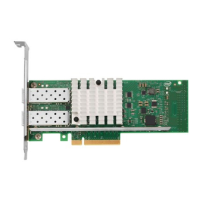
